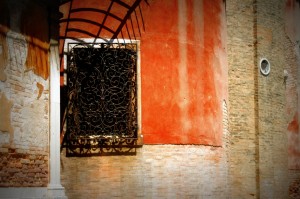 On my very first trip to Italy, I used Venice as my entry point. It made sense at the time based on my itinerary, but looking back it’s quite possible that decision played a huge part in why I fell so completely in love with the country and why Venice remains one of my favorite cities on the planet to this day.
On my very first trip to Italy, I used Venice as my entry point. It made sense at the time based on my itinerary, but looking back it’s quite possible that decision played a huge part in why I fell so completely in love with the country and why Venice remains one of my favorite cities on the planet to this day.
It’s not hard to understand why the experience of arriving in Italy for the first time is enhanced by Venice being the first city you see. Think about it – instead of lugging your suitcases from passport control onto a crowded bus or airport shuttle and being driven through Italian suburbia to your hotel, you walk out of the Venice airport and climb onto a boat. A boat, people. Within minutes you’re seeing this crazy city on the horizon, a city built on the water that’s slowly reclaiming it, and you’re gasping in spite of your seasoned-traveler self.
If there’s a better introduction to Italy than Venice, I haven’t found it.
I’m one of those trigger-happy photographers who just can’t stop taking pictures, and in that sense Venice will always be one of my favorite places to be. It is, I maintain, more challenging to take a bad picture in Venice than a good one. In nice weather, the play of light as it bounces off the water onto crumbling walls makes me giddy. In bad weather, the darker side of the city readies itself for its close-up.
But one of my favorite things about Venice, particularly from a photographer’s perspective, is the very thing that may eventually doom the city – the beautiful decay. It’s one of the cities that, to me, is the very definition of the word “decadent” – since it’s simultaneously “in a state of decline or decay” and also “providing unrestrained gratification.” Case in point, in the previous paragraph one of the things that I said I swoon over when taking photographs? Crumbling walls. Would I be so excited to press the shutter if all those walls were intact or – perish the thought – repaired?
Many years after that first fateful visit to Venice, I’m still endlessly charmed by the maze of twisting alleys and the sound of water lapping at buildings, and – yes – I’m still taking pictures of the beautiful decay. I read stories about how Venice talks about limiting the number of visitors it lets in each day , and perhaps even banning day-trippers altogether, and I go back and forth on how I feel about that. Will measures like that save the city? Maybe. Maybe not. Could they deny others the opportunity to experience a city I hold so close to my heart? Probably. I feel like there has to be a balance somewhere in the middle, although I don’t know what it is.
I had a telling experience when I went to Naples for the first time and limited my exploration to only the storico antico – in jotting down some thoughts about the infamous city one night, I found myself repeatedly typing the word “Venice” when I meant “Naples” and, after chuckling at my error, I tried to figure out why. The only thing I could come up with was that the old historic center of Naples has that same sense of decadence about it that Venice does.
Which made me think that there’s a certain amount of beautiful decay throughout Italy. It taunts us with the notion that things have been just this way for centuries upon centuries, and if we think a few measly tourists are going to destroy something that Attila the Hun couldn’t, then we’ve got another thing coming.
Saying nothing can or should be done to try to save Venice from too much decay is foolish, but banning day-trippers is just as foolish (not to mention impossible). The question is whether Venice (and Italy as a whole) will ever be able to find that happy medium.